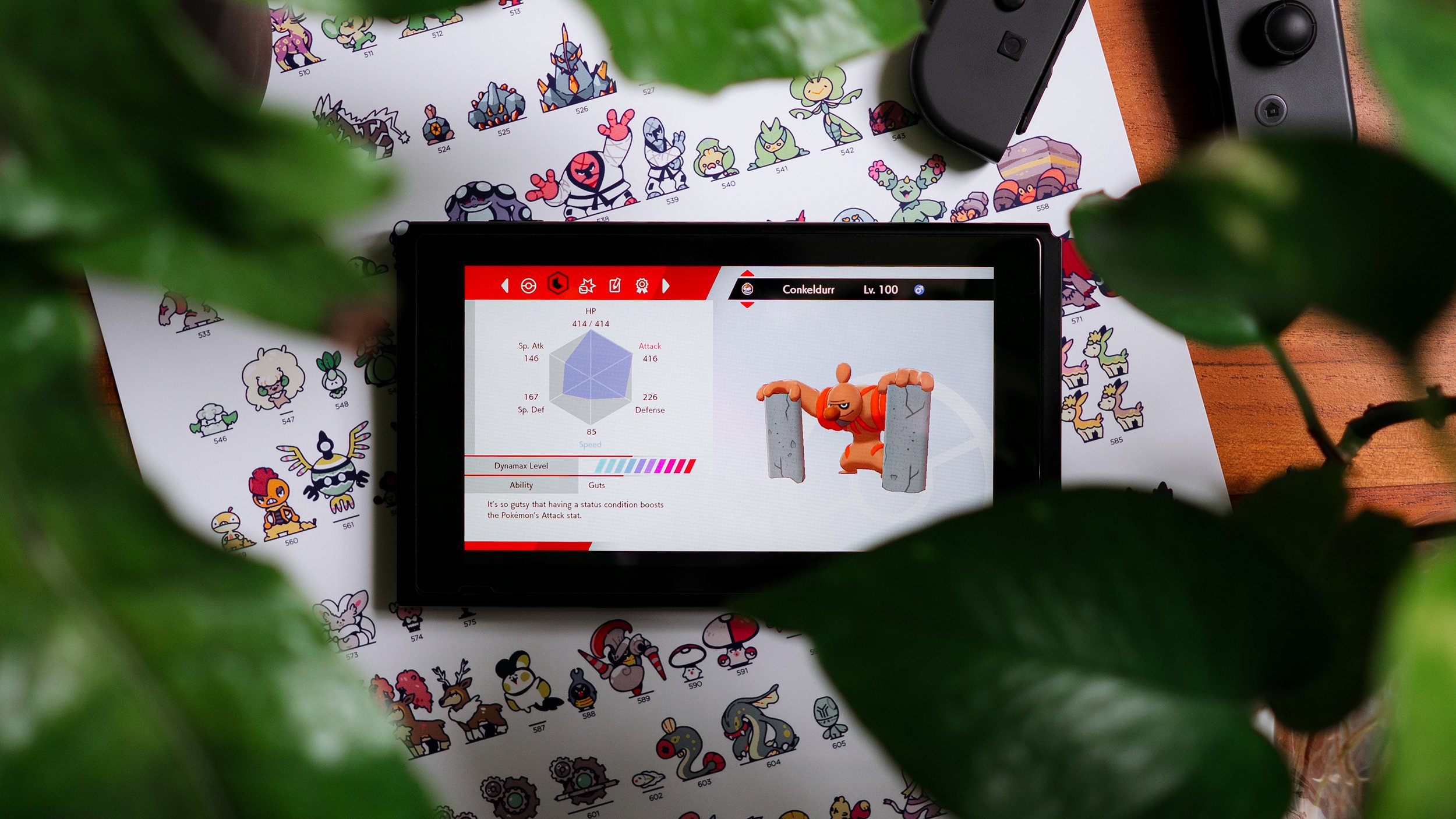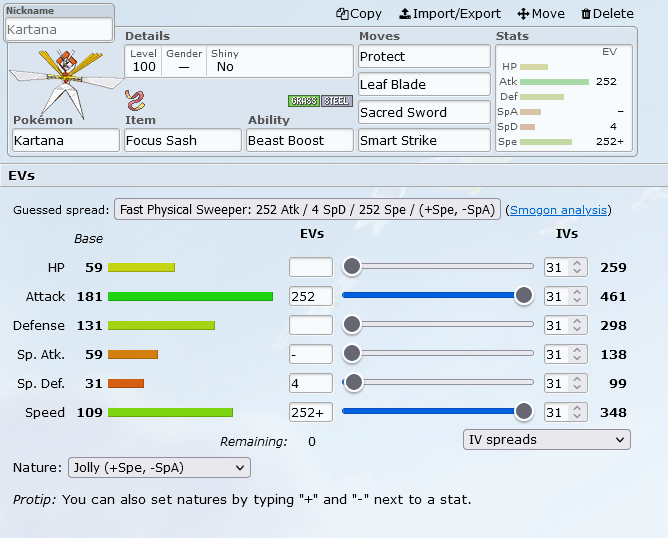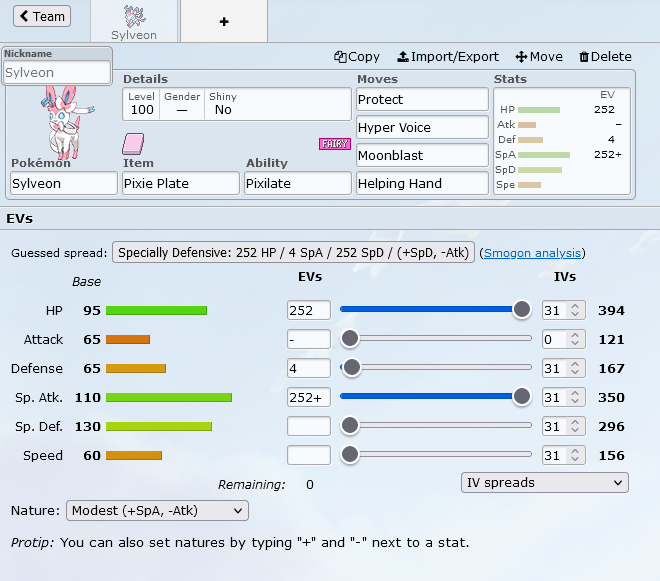
EVing#1: How to Make Simple EV Spreads
9min read
A basic guide to EV spreads.
Written by Aaron Traylor
Teambuilding / Putting It All Together
The First Step for Making EV Spreads
EV spreads offer the most customization out of any element of VGC (outside of selecting Pokémon for your team), and, at first glance, they can be daunting. Although EV spreads have a significant impact on the game, the skill of making spreads is not taught (or even mentioned!) in the mainline Pokémon games, there’s no-one-size-fits-all answer for each Pokémon, and ultimately, it’s challenging to know without experience whether your spreads are helpful or detrimental. All of these factors combined make crafting EV spreads an opaque and seemingly complex process.
We’re going to start you off with the absolute basics of constructing EV spreads, and give you a strategy that will be straightforward and effective. You’ll be able to build from this foundation in later articles.
What do EVs Do, Practically?
EVs are going to change your Pokémon’s stats. What that means practically differs based on the stat that gets EVs. For Speed, EVs change when your Pokémon moves in the turn. For all other stats, EVs change how your Pokémon’s attacks and defenses will interact with the damage formula, which guides how much damage an attack deals. The damage formula is complex, and we don’t expect you to know it off the top of your head - we certainly don’t!
Here is a screenshot from the Pikalytics Damage Calculator that shows a damage calculation. This Excadrill has 252 EVs in Attack. The Sylveon has 252 EVs in HP, and 4 in Defense. We can see that Excadrill will do between 98% and 115.8% of Sylveon’s maximum health. If Excadrill had less Attack EVs, this attack would do less damage; and if Sylveon had less HP EVs, this attack would do more damage, and maybe even guarantee the knockout.
Know your Pokémon
The most important part of battling is to know what the Pokémon on your team are capable of. The EV spread simply changes your Pokémon’s capabilities in battle.
Each of the Pokémon on your team was added to your team for a reason-- and the EVs are, for the most part, going to help it carry out that purpose. Before making an EV spread, think to yourself-- why did you put that Pokémon on your team? Then set out to make that EV spread with that goal in mind.
Starting your Spreads
A simple EV spread focuses on the Pokémon’s strengths, and might be intended to be general-purpose. The most simple EV spread of all is maxing out two of the Pokémon’s stats and putting the last stat point in a third. This is called a 252/252/4 spread, or a “max max” spread, because 252 is the maximum amount of EVs that a Pokémon can have in a stat.
Kartana @ Focus Sash
Ability: Beast Boost
EVs: 252 Atk / 4 SpD / 252 Spe
Jolly Nature
Detect
Leaf Blade
Sacred Sword
Smart Strike
For example, I might have added Kartana to my team because I wanted to take advantage of its fast physical Grass- and Fighting- type moves. If I’ve chosen to have it hold the Focus Sash for survivability, I’m going to max out its Attack stat (so it does as much damage as possible) and its Speed stat (so it is as fast as possible). I’m also going to give it a Jolly nature, which boosts Speed and drops Special Attack, so it can outspeed all Pokémon below 109 base Speed.
I’m adding Sylveon to my team for its strong Hyper Voice while being a fairly bulky but slow Special Attacker. Sylveon isn’t naturally a very fast Pokémon, so I’m not going to try to take advantage of its Speed. I’m going to max out its Special Attack so that it deals as much damage as possible, and then put the rest of the points in HP so that it has more health to survive attacks. With my last 4 EVs, I’m going to put them in Defense, its lower defensive stat.
Sylveon @ Pixie Plate
Ability: Pixilate
EVs: 252 HP / 4 Def / 252 SpA
Modest Nature
IVs: 0 Atk
- Protect
- Hyper Voice
- Moonblast
- Helping Hand
Speed is the Most Important Stat
This is something we’ll drill into your head again and again when you’re making your EV spreads: be mindful of the Speed stat that your Pokémon ends up with. If a Pokémon’s speed is higher by one point, it will move first-- and that one point can be the difference between winning or losing a game. If you’re going to give serious thought into any aspect of your EV spread, make it the Speed stat-- you can do that by checking out speed tiers and usage stats.
“When I’m making an EV spread the very first thing I do is decide on my speed stat! That will let me know how many EVs I have left to accomplish my goals for that Pokémon after.”
Increase Strength or Shore Up Weaknesses
When deciding what you want your EVs to do, there are two general approaches: you can lean into the strength of a Pokémon, or you can try and decrease that Pokémon’s weaknesses. One important general rule is that you get the most value for a stat point the lower a stat is - this means that a point of special defense on Kartana (base 31 special defense) will have a larger impact in the damage formula than a point of special defense on Blissey (base 135 special defense). This isn’t to say you should always be investing in your Pokémon’s lowest stats, but you should be aware that there are diminishing marginal returns.
As a side note, you should always invest in 3 or 5 stats on your Pokémon, never 2, 4, or 6. The short explanation is that if you invest in 2, 4, or 6 stats, you end up wasting EVs that could go elsewhere to be not wasted– we’ll explain more in depth later.
Natures
When making a simple EV spread, it’s best to use a nature that improves the most important stat for that Pokémon. If moving first is essential for this Pokémon, you may want to give it a Speed-boosting nature such as Timid or Jolly. If it isn’t, you may want to boost an attacking stat with Adamant or Modest, and if your Pokémon is defensively oriented you may want to boost its Defense or Special Defense.
Whatever nature you use will also drop a stat at the same time. Your strategy here is for the most part to minimize the attacking stat that you use the least.
If your Pokémon is using physical attacks, drop the Special Attack stat, and vice versa for Special. Utility moves that do slight damage (e.g. Fake Out) shouldn’t factor into your calculation here
If your Pokémon is operating in Trick Room, consider choosing a nature that drops its Speed so it’ll move even slower.
In extremely rare cases, you might not want to drop either attack stat, and you might not want to drop Speed. As a last resort, you can drop a defensive stat, but we don’t recommend this as your defenses are extremely important.
In VGC, here are the most common natures you’ll see:
Offensive: Jolly/Timid, Adamant/Modest, Brave/Quiet
Defensive: Bold/Relaxed/Impish, Calm/Careful/Sassy
A Simple Method for Making a Simple EV Spread
Here’s how we advise making a simple EV spread for each of your Pokémon:
Is your Pokémon holding Focus Sash, or is otherwise fast and frail (base speed around 96+, base HP and defenses around 60–70 or less)?
You probably want to maximize its Speed and either Attack or Special Attack, whichever is relevant. Consider a nature that boosts Speed and drops the irrelevant attacking stat.
Is your Pokémon midspeed (base 60–95)?
Midspeed Pokémon are the most challenging to make EV spreads for. This is a great time to check out the speed tiers and usage statistics. Take a guess with Speed — it will be obvious over the course of some games whether it’s at a good number, and you can always adjust later. As a good rule of thumb, if there’s a popular species of Pokémon around your Pokémon’s Speed that can KO it, and your Pokémon can KO back, you probably want to outspeed it when possible. If you can’t decide, either 252 Speed or 252 HP is probably a good call. With your leftover EVs, think about your Pokémon’s role on the team. If its job is to take out specific Pokémon with a super effective hit (for example, Arcanine attacking Ferrothorn), feel free to put the points in defensive stats however you see fit. If you want to be dealing more damage in general, put points in its attacking stat.
Is your Pokémon going to be dealing damage in Trick Room?
You probably want to max its HP and its attacking stat. If HP is much higher than a defensive stat (e.g. Snorlax or Rhyperior), put the points in that defensive stat. Keep Speed as low as possible, and think about what Pokémon you’re outspeeding and underspeeding.
Is your Pokémon defensively oriented (e.g. its only job is to set Tailwind or Trick Room or to set Light Screen)?
Go straight to HP and the defenses. Pick a defensive stat to put EVs in based on that Pokémon’s stats, and put EVs into Defense or Special Defense accordingly. Split evenly or evenly-ish if you can’t decide. Be careful with these Pokémon — if you have too many, you may not have enough offensive power to win games.
Is your Pokémon holding Eviolite?
Maximize its HP to get the most out of the defensive boost. Then split evenly between the defenses, make a metagame judgment, or dump EVs into the lower stat (which is more effective in the damage formula).
Conclusion
I hope that this guide helped you understand some of the intuition behind EV spreads and how to apply them to your team. This is the first of a series of EV spread articles, and is intended to be more of an introduction-- put some EVs on your team and try them out on the ladder. In the next article, we’ll talk about how to make EV spreads more complex, but this is not a necessary step for battling.
Standard EV Notation
People will write out their EVs differently: let’s imagine that we have a Lucario with 252 EVs in Attack and Speed:
Notation Explained: HP/Attack/Defense/Special Attack/Special Defense/Speed
Expanded: 4 HP / 252 Atk / 252 Spe
Shorthand: 4/252/0/0/0/252
Japanese: 4H-252A-252S



